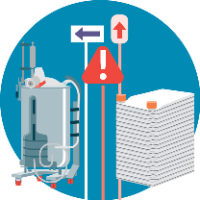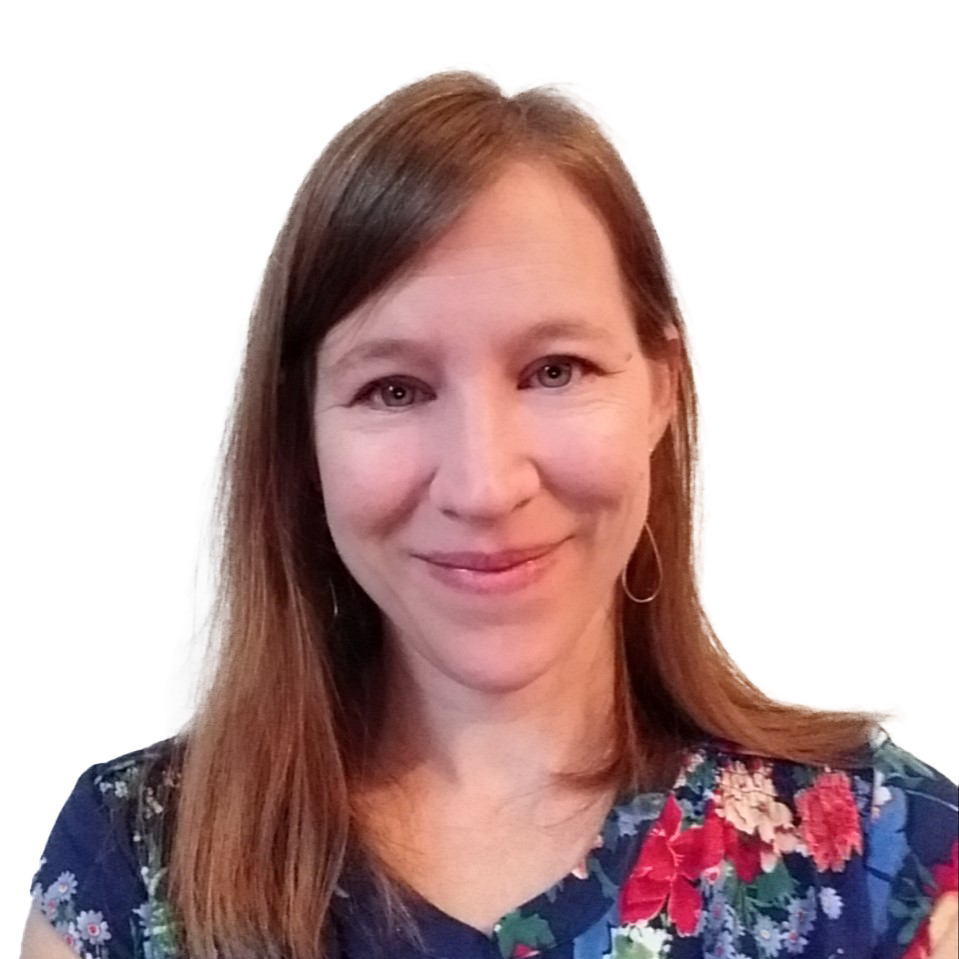Industrializing viral vector manufacture
Cell & Gene Therapy Insights 2021; 7(8), 973–979
10.18609/cgti.2021.128
Rapid and efficient scale-up is critical to the success of the cell and gene therapy industry – but viral vector manufacturing remains a bottleneck. We caught up with Merck’s Daniel Teasley and Katherine Schewe to get their thoughts on the future of viral vector production and how new, purpose-built tools could reduce process development time.
Q What is Merck’s goal for viral vector manufacturing?
DT: Essentially, we’re trying to industrialize viral vector manufacturing. We want to make it as efficient as possible, like monoclonal antibody production. To gain the most impact for the most patients there needs to be scalability and robustness in manufacturing, and those are areas where we still have work to do as an industry.
KS: One example of that focus is the soon-to-launch VirusExpress™ 293 AAV (Adeno-Associated Virus) Production Platform – a combined cell line, media, and process – that will help therapeutic developers get their treatments to patients faster.
Q What are the greatest challenges in viral vector manufacturing today?
KS: The two biggest challenges that I see are scalability and reliable analytical technologies. We need to be able to reliably produce quality vectors at a larger scale, to get therapies to patients more quickly, and to do so affordably.
DT: The lack of purpose-built templates for manufacturing is a problem. There are well-established processes for the production and purification of more traditional biologics but much less so for viral vectors. Production technologies tend to be either decades-old technologies or cobbled together from other biologic therapeutics. Taking a downstream process for monoclonal antibody production and adapting it to work with viral vectors is a decent stopgap, but to maximize the efficiency of the process we need purpose-built solutions.
Q How can we reduce the complexity in viral vector manufacture?
DT: There are several layers of complexity in vector manufacturing. The first is the genetic complexity of viral vectors. We must ensure that the vectors do not become replication-competent. We’ve come up with several ways to mitigate that risk, usually by splitting the required viral components between different pieces of DNA. That’s a complexity that we must deal with as opposed to reduce or eliminate.
The second is the physical complexity of vectors. They are complex macromolecules that can be unstable or sensitive to the environment. This is an area where we can make a difference, either by improving assembly in cells or the stability of particles.
The last and probably biggest piece of the complexity puzzle is manufacturing within a biological system. Any time you use living cells as your production method, a host of variables come into play that can affect your productivity. To reduce that complexity, we need a complete understanding of how the biology of the production system impacts the amount and quality of virus produced. Then we can work to create more standardized biological production systems and a more consistent production process.
Q What are the roadblocks to scaling up viral vector production?
DT: Transfection is the greatest challenge to scale up in my view, presenting both chemical and engineering challenges. The transfection reaction is not very stable, and when you move up to 200- or 500-liter bioreactors, there is a physical challenge of being able to mix a large transfection reaction and add it into a bioreactor in a reasonable amount of time. There is a need to either reduce the cost of the transfection or to come up with novel solutions that are more cost-effective to make the process easier.
KS: The other way around it is to remove transfection from the viral production process altogether. The introduction of stable producer cell lines has the potential to make production less complex by eliminating the need to transfect cells with multiple different plasmids.
Ultimately, the best way to achieve a scalable process is to have a reliable process – a proven process that consistently performs over time. That is something with which the industry is struggling.
Q On the issue of adherent versus suspension cell culture, do you see a trend in the cell and gene therapy field?
DT: We adamantly believe that the field needs to pivot to suspension cell culture systems if it is to meet the capacity needs for vector production that we see approaching over the next five years.
There are some workarounds, such as fixed-bed bioreactors, which allow scale-up of adherent cultures, but we see that as a stopgap. True suspension capability will be required to achieve the production volumes needed to treat large numbers of patients with diseases like muscular dystrophy.
For a company in early trials, treating a small number of patients, they may ask, “Why do I need to go to suspension now when I can do this cost-effectively and quickly in an adherent system?” But it’s important to always think about your ultimate commercial need and develop a process that will meet that in the long run.
KS: There are added benefits to suspension cell culture. Not only will it help you scale up, but also we have been able to design a cell culture media that is serum-free and chemically defined, which is an advantage from a regulatory perspective.
On top of that, using suspension bioreactors can reduce the risk of contamination by doing the transfection and production in a closed system.
Q What role will automation and AI play in the future of the industry?
DT: Automation is going to be important to improve the consistency of the process, and therefore make it more scalable. It’s already happening to some degree. Switching to a suspension bioreactor is inherently a more automated process than the manual handling required for culture in adherent vessels. We’re putting cells into a computerized bioreactor system that monitors the growth conditions and can respond by adjusting things like temperature, pH, and gassing rates, which allows more precise control and consistency in production. AI is further out on the horizon I think, but there are potential benefits in developing new processes, or in day-to-day production by being able to respond to real-time analytics in an intelligent manner.
Q What are your team’s priorities over the next year?
KS: We will be launching our new VirusExpress™ 293 AAV Production Platform later this year. It’s similar to our already-available VirusExpress™ Lentiviral Production Platform, and allows us to offer a purpose-built cell line, media, and process to customers to improve their manufacturing scalability and consistency.
We’re already working on scaling up that process and expanding it into multiple AAV serotypes so customers can be confident in the product’s ability to produce virus at the scales relevant for their therapeutics.
DT: Another priority prior to the launch of our VirusExpress ™ AAV production platform is the opening of our large-scale BioReliance® viral vector manufacturing facility in Carlsbad, California. We have invested significantly in this new facility to ensure our customers have the capacity and scale required to treat their patients from clinic through commercialization. This expansion of our CDMO offering, alongside our production platforms and templated processes, will promote speed and quality as we help pave the path to the industrialization of viral vector production.
Q What will viral vector manufacture look like in 5 or 10 years?
DT: In 5 years, I expect to see evolutionary progress. For example, widespread use of suspension systems, improved automation and scale, and more robust and standardized processes.
In 10-years, we could see more revolutionary changes. It would be interesting to see the creation of new viral vectors to supplement lentiviral and AAV vectors. There is also a lot of innovation beginning now on improving packaging to make higher quality virus, and capsid engineering to make vectors highly targetable for particular indications.
I also hope to see the development of viable, stable producer cell lines, reducing the need for transfection from the production of viral vectors. That’s an area we and many others are working on, but it’s going to take some time to iron the kinks out there.
KS: For applications where viral vectors continue to be used, I would like to see advances that allow more virus to be delivered, so we can decrease doses. There are only so many viral vector manufacturing facilities around the world and if the enormous potential of these therapies is realized, we will need to look at all angles to increase supply.
Q How has COVID-19 impacted the cell and gene therapy industry?
KS: A lot of resources and efforts have (rightly) been diverted to fighting the pandemic. That has created some delays and supply chain issues for the industry.
DT: We saw an incredible response from pharmaceutical companies and innovators, from tool manufacturers and suppliers, in rising to meet this incredible production demand, where hundreds of millions of doses of a therapeutic were produced in less than a year. As Katie points out, that probably led to some cell and gene therapy projects taking a back seat, but it also showed us what we were capable of in terms of rapid scale-up. And we still had a record amount of funding for cell and gene therapies and are on track for multiple cell and gene therapy product approvals in the United States in 2021.
Q What keeps you motivated?
DT: I am a geneticist by training and worked extensively with viral vectors in my graduate research so I jumped at the opportunity to work in product management for cell and gene therapy. It’s exciting to view viral vectors the manufacturing and therapeutic angle. But the greatest attraction of the field is the impact we can have. These therapies are often used for rare diseases or as treatments of last resort, and we can see the work that we do with therapeutic developers make a real difference in people’s lives.
KS: It’s amazing to see these therapies make a difference for previously incurable diseases and allow people to live longer and more enjoyable lives. For me, the field seems like a logical next step in the evolution of therapeutic development.
Affiliations
Daniel Teasley
Senior Product Manager, Viral & Gene Therapy, Merck
Katherine Schewe
Product Manager, Viral & Gene Therapy, Merck
Authorship & Conflict of Interest
Contributions: All named authors take responsibility for the integrity of the work as a whole, and have given their approval for this version to be published.
Acknowledgements: None.
Disclosure and potential conflicts of interest: The authors are both emplyees of Merck. The authors declare that they have no other conflicts of interest.
Funding declaration: The authors received no financial support for the research, authorship and/or publication of this article.
Article & copyright information
Copyright: Published by Cell and Gene Therapy Insights under Creative Commons License Deed CC BY NC ND 4.0 which allows anyone to copy, distribute, and transmit the article provided it is properly attributed in the manner specified below. No commercial use without permission.
Attribution: Copyright © 2021 Merck KGaA. Published by Cell and Gene Therapy Insights under Creative Commons License Deed CC BY NC ND 4.0.
Article source: Invited.
Interview conducted: Aug 25 2021; Publication date: Sep 15 2021.



